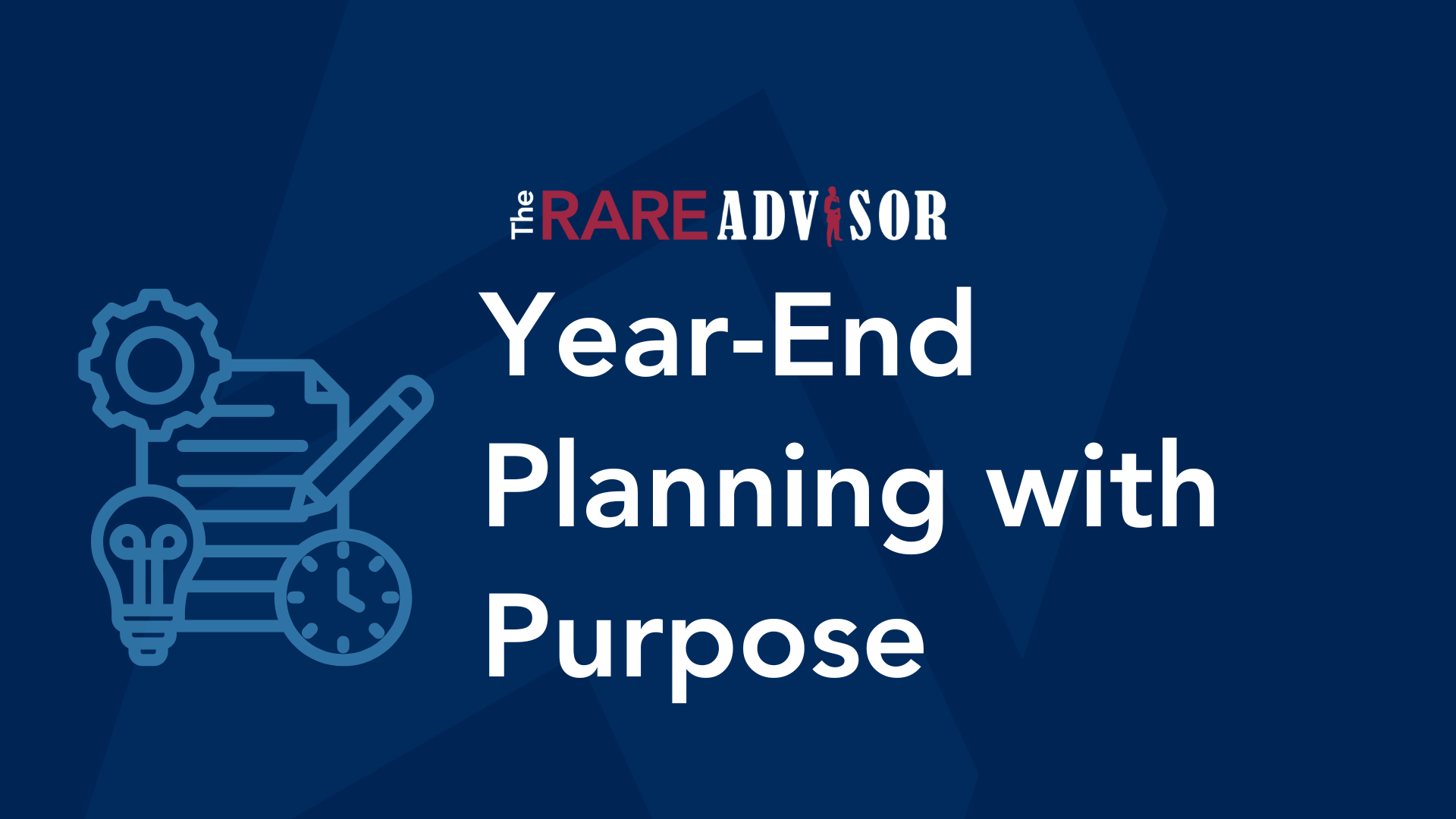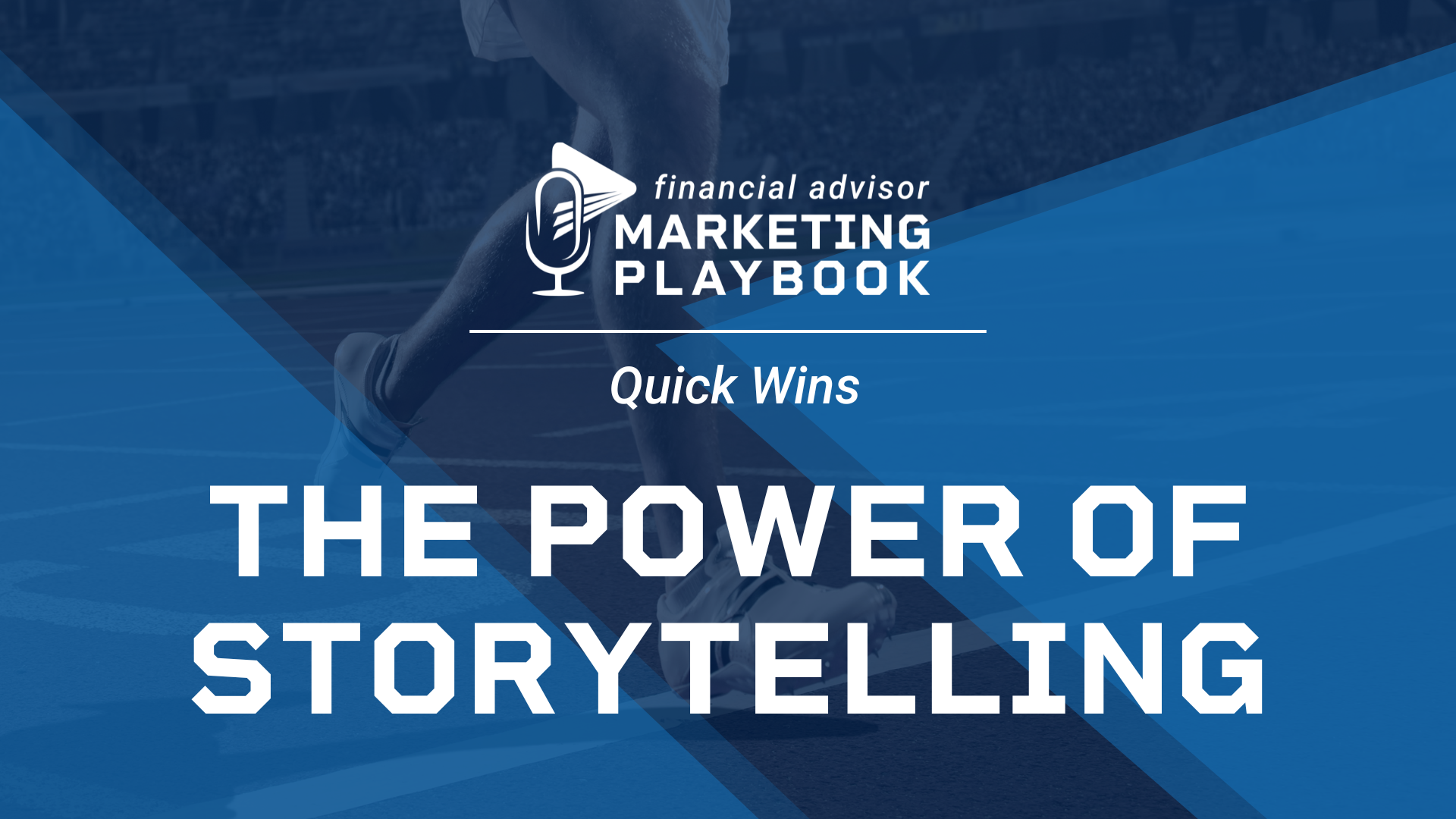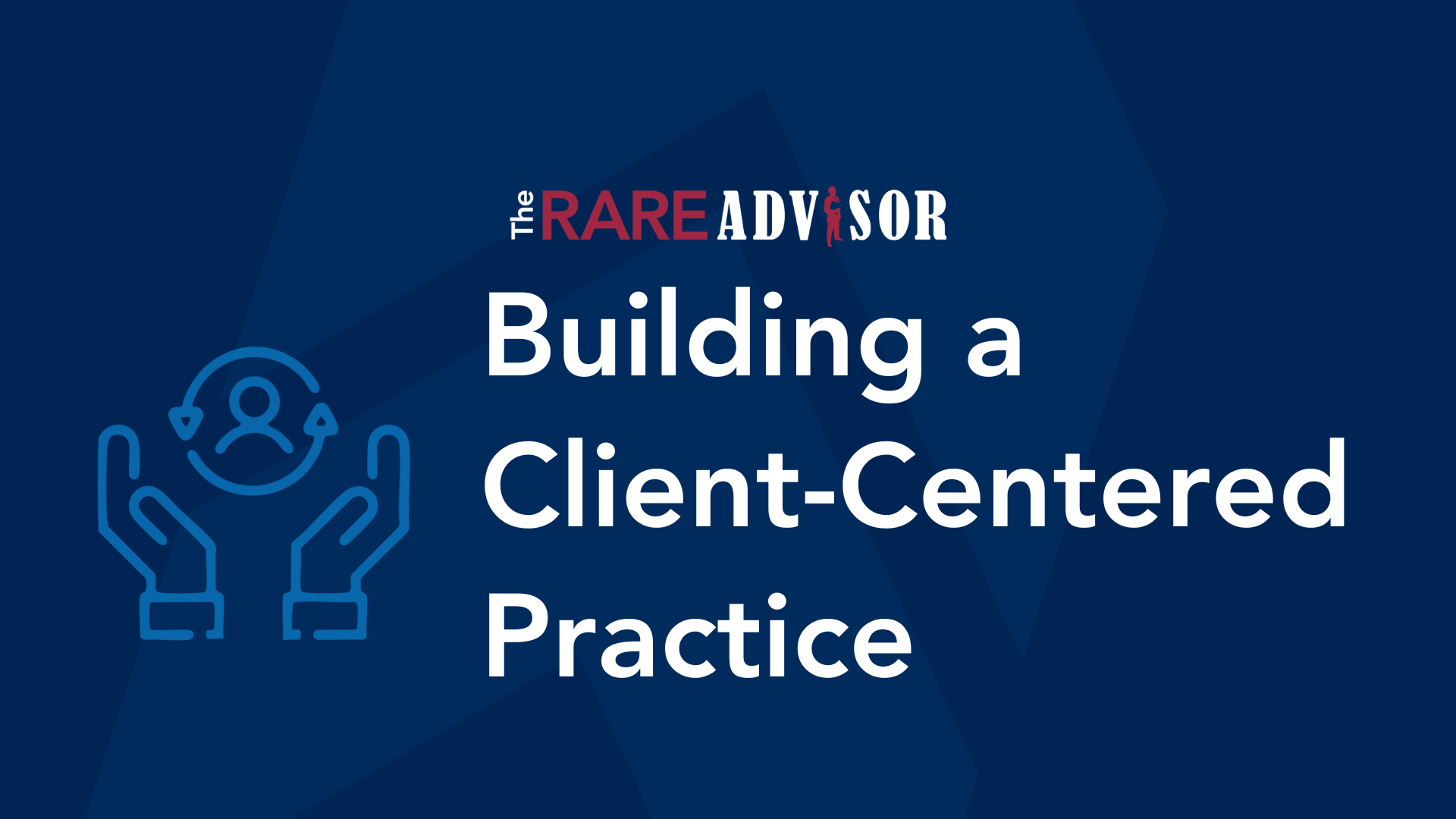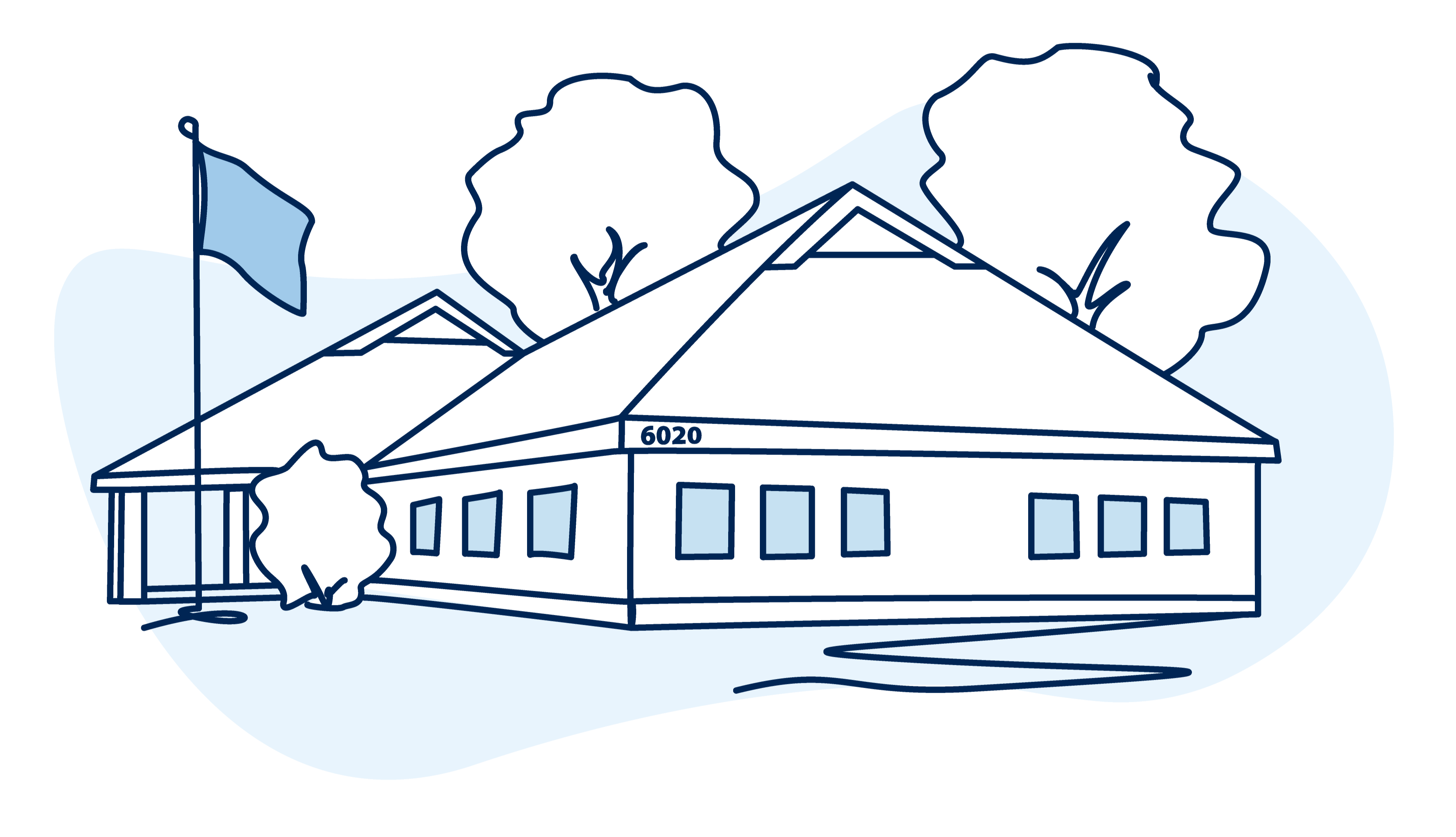How Gratitude Can Grow Your Practice: Thanksgiving Lessons for Financial Advisors
-1.png)
In this episode of The Rare Advisor, host Aaron Grady shares why Thanksgiving is one of the most powerful — and underutilized — times of year for financial advisors to connect with their top clients. He explains how this quieter, gratitude-filled season offers a unique opportunity to build deeper relationships, foster loyalty, and create memorable client experiences that drive advocacy. From heartfelt handwritten cards to “annual anchor” gifts that become part of clients’ traditions, Aaron outlines practical ways to operationalize gratitude and turn it into a repeatable, referable process. Tune in to learn how to transform a simple gesture into a lasting impression — and make Thanksgiving a cornerstone of your client relationship strategy.
SUMMARY
In this episode of The Rare Advisor, host Aaron Grady explores why Thanksgiving represents one of the most meaningful and strategic times of the year for financial advisors to connect with their best clients. He explains that while many advisors default to December for outreach—sending cards, gifts, and other gestures of appreciation—that timing is actually one of the most crowded and least effective moments on the calendar. Thanksgiving, on the other hand, provides a quiet, emotionally rich, and uncluttered window to reach clients in a way that resonates more deeply. The weeks leading up to Thanksgiving are naturally filled with reflection, gratitude, and togetherness. Families are slowing down, taking stock of what matters most, and sharing stories and traditions. For advisors, this creates a rare opportunity to express appreciation in a genuine and memorable way that strengthens trust, loyalty, and emotional connection.
Aaron emphasizes that meaningful client communication during Thanksgiving isn’t about marketing, performance updates, or checking a box in a service model. It’s about genuine gratitude. He challenges advisors to see this time as a relationship-building moment—not a business moment—and to use it to reinforce the stewardship mindset that separates great advisors from average ones. Thanksgiving outreach, when done right, moves a relationship from transactional to experiential. It shifts the dynamic from simple client service to client stewardship, where the advisor’s presence is felt not only through results and advice but through empathy, care, and authenticity. The goal is to make clients feel valued as people, not just as portfolios.
To help advisors put this into practice, Aaron outlines three key ways to leverage Thanksgiving for relationship-building: handwritten cards, annual anchors, and a combination of the two. The first approach is the simplest but often the most powerful—a handwritten Thanksgiving card. He makes clear that this should not be a bulk-printed mailer or something impersonal with a stamped signature. Instead, it should be a short, sincere note written specifically for that client, expressing gratitude for their trust and relationship. A message as simple as, “As Thanksgiving approaches, I just want to thank you for the trust you’ve placed in me. It’s a privilege to work with you, and I truly value our relationship. Wishing you and your family a wonderful holiday,” can have a tremendous impact. There’s no sales pitch, no performance recap, just heartfelt thanks. Aaron suggests this be reserved for a small subset of top-tier clients—the AAA and AA clients—so that each message can be personalized and thoughtful. When done authentically, these simple notes can leave lasting impressions and deepen emotional connection.
He then discusses a more elevated version of this gesture: the “annual anchor.” This concept takes client appreciation a step further by creating a tradition built around a tangible, memorable gift that serves as a symbolic anchor for the advisor-client relationship. Annual anchors are designed to be strategic and meaningful. They’re not branded merchandise or promotional giveaways, but gifts that evoke emotion, memory, and connection. Aaron describes how an advisor once hand-delivered pies to top clients in ceramic pie plates the week before Thanksgiving. Each year, clients would receive a choice between apple or pumpkin, and the plates became keepsakes—beautiful, unbranded, and tied to a moment that was both personal and thoughtful. Over time, these gifts became part of clients’ family traditions, creating stories that tied back to the advisor organically. As guests gathered around the Thanksgiving table and asked about the pie plate, the advisor’s name would naturally come up in conversation, resulting in earned advocacy rather than forced promotion. This kind of storytelling connection is what truly drives referrals because it’s rooted in genuine emotion and shared experience.
Aaron elaborates on how advisors can make annual anchors even more special and enduring by focusing on two key ideas: shelf space and shelf life. Shelf space refers to visibility—sending gifts at Thanksgiving gives advisors more presence because clients aren’t receiving a flood of mail or packages like they would in December. Thanksgiving cards and gifts stand out on mantles, tables, and countertops simply because there’s less competition for attention. Shelf life refers to longevity—choosing items that will last, be displayed, or reused, rather than consumed and forgotten. A well-made, beautiful gift such as a linen card, ceramic dish, or decorative item can remain in a client’s home for years, serving as an ongoing reminder of the relationship. Aaron gives an example of how a Nora Fleming pie dish with interchangeable decorative ornaments can evolve into a recurring touchpoint—clients receive the dish one year, then small ornaments for different holidays in following years. This turns one gesture into a recurring experience that grows in meaning and connection over time.
The third option Aaron recommends is combining the handwritten card with the annual anchor for maximum impact. By pairing the two, advisors can merge emotional sincerity with a memorable, tangible gesture. For example, delivering a pie with a handwritten note tucked inside or sending a heartfelt card alongside a thoughtful keepsake creates a layered experience that’s both personal and strategic. These touches are not about promotion or branding—they’re about resonance. Aaron cautions advisors to resist the urge to put their logo on everything. The power of these gestures lies in their authenticity and subtlety. Clients know where the gift came from, and they’ll feel it more deeply if it’s about them, not about the advisor’s brand.
Aaron then introduces the idea of operationalizing gratitude—turning these gestures into a repeatable, referable process that can be embedded into a firm’s service model. He provides a simple three-part formula: make it thoughtful, make it predictable, and make it personal. Thoughtfulness comes from selecting something meaningful and emotionally resonant. Predictability means doing it at the same time each year so it becomes part of the client’s experience memory. And personalization ensures clients know the gesture was intended specifically for them, not mass-produced for everyone. This structure allows advisors to scale gratitude in a way that doesn’t feel mechanical. By building this into the firm’s CRM or client service calendar—blocking time each November to segment top clients, plan gifts, write notes, and execute deliveries—advisors can create consistency. That consistency, Aaron notes, builds trust, and trust leads to advocacy.
He encourages advisors to review and refine their approach each year—adjusting who’s included, what’s sent, and how it’s delivered. Over time, this process embeds gratitude into the business model itself, making appreciation not just a seasonal activity but a defining part of the firm’s culture. When done consistently and with purpose, these small gestures compound into a reputation for care, authenticity, and thoughtfulness that clients talk about.
Aaron closes by emphasizing that the long-term impact of these efforts goes far beyond a momentary smile or thank-you. When done right, clients begin to anticipate the outreach. They look forward to it, mention it to family members, and share stories that reinforce the advisor’s role in their lives. That’s when an advisor becomes referable—not because they asked for introductions, but because they earned advocacy through meaningful connection. When a client says at Thanksgiving, “This pie came from our advisor—they do this every year,” it tells a powerful story of trust and appreciation. Over time, these experiences transform advisors from service providers into valued professionals who occupy an emotional space in clients’ lives. Aaron’s final message is simple but powerful: gratitude is not a tactic—it’s a philosophy. But when you operationalize that philosophy, it becomes a growth strategy. By aligning actions with the emotional tone of Thanksgiving, advisors can deepen trust, enhance loyalty, and grow their business by design rather than by chance. When the “why” is clear—the reason behind the gesture—the “how” becomes easy. And when gratitude is practiced consistently and with purpose, it becomes one of the most effective relationship-building strategies an advisor can implement.
TRANSCRIPT
Aaron Grady, Advisor Consulting Director at USA Financial - Welcome back to another episode of the Rare Advisor where we help top financial professionals build referrable practices, deepen client relationships, and elevate their brand. I'm your host, Aaron Grady, and today we're exploring why Thanksgiving is such a timely and impactful opportunity to connect with your best clients and how you can leverage this time of year to meaningfully strengthen relationships but ultimately to drive client advocacy. Whether it's a handwritten card, an annual anchor, or both, Thanksgiving presents an optimal window to create lasting impressions and reinforce the connections you've worked so hard to build. It's one of those rare moments in the year where the timing, the tone, and the emotional resonance all align. So why Thanksgiving? What makes this particular time of year such a powerful, important opportunity to connect with your clients? You see, most advisors default to December for their outreach.
They send cards, they send gifts, other gestures of appreciation. While this intent is good, December is often crowded. It's a very crowded time. Everyone is doing it. The inboxes, the mailboxes are full. The messages tend to blur together. But Thanksgiving, now that's a different story. Thanksgiving offers a unique opportunity because it's a low noise window. It's a quiet, quieter moment on the calendar that still carries emotional weight. The weeks leading up to it are typically filled with gratitude, reflection, and a more relaxed pace. People are pausing, looking around. They're taking stock of what truly matters. They're spending time with their families. They're sharing stories and reconnecting with traditions and often meeting. In contrast to December, where the holidays are often more commercial, hectic, and saturated, Thanksgiving is emotionally rich and most oftentimes uncluttered.
That's why simple Thanksgiving cards or even an annual anchor delivered thoughtfully can have such an impact. You're not delivering a touch point. You're making a meaningful impression. Because this isn't about staying visible or top of mind only. It's about reinforcing your value, your brand, your stewardship mindset in a way that's felt, not just seen. So, take this time to reach out especially to your AAA and your AA clients.
This is not about talking business, not to remind them of performance or planning, but simply to say, I am grateful for the relationship. And that's it. And really, that's everything. But let's be clear about something. This is not about checking a box or sending something for the sake of doing it. Now, oftentimes that happens. You put new things into your service model and you say, hey, we're going to make sure we do this every single year. Consistency is important, but you still need to do it with purpose.
This is about using the emotional gravity of the season to strengthen relationships and allowing you to one, move from a transactional relationship to an experiential, creating an experience that they can live in, shift from client service to client stewardship, and then also focus on who your clients are, not just what they have. Thanksgiving gives you a natural, authentic keyword, authentic opening to express appreciation in a way that feels genuine and strengthens the trust and loyalty you've been curating with your clients. Now, there are typically, in my opinion, three easy ways you can start to leverage Thanksgiving for the sake of gratitude and to deepen relationships with your clients. There's a bunch of other ways you could probably do this, but I would suggest start here and then build off of it. One is a simple handwritten Thanksgiving card.
A handwritten Thanksgiving card is incredibly powerful. And I don't mean a pre-printed bulk mailer with your name stamped on it. I mean a sincere short note that says something like, as Thanksgiving approaches, I just want to say thank you for the trust you've placed in me. It's a privilege to work with you and I truly value our relationship. Wishing you and your family a wonderful holiday. It's sincere, it's personal.
It's timeless. No pitch, no update, just a heartfelt message of gratitude. Keep it simple, keep it human. This is, and understand that you're doing this for a small subset of clients, your AAAs and AAs. You're not doing this for 250 households. You can make it personal. You can make it sincere when you're doing it for a smaller set. Now, a bonus idea would be, create a card or curate a card that gives you more shelf space and more shelf life. Two concepts, shelf space, Thanksgiving in itself typically gives you more shelf space. If you wait until around the holidays, around Christmas time, the mantle is covered with Christmas cards and so you're fighting for shelf space. Typically around Thanksgiving and other holidays, not as many cards are sent giving thanks or telling people that you're thankful for them and their relationship. So you automatically get shelf space.
Shelf life comes through the idea of upping your game with a type of card. It could be a beautiful linen card. It could have a beautiful work of art, a beautiful seasonal image on it. A card where people would have a hard time throwing it in the trash. So there are ways to extend the shelf life of this card. The second opportunity would be through what we call an annual anchor. If you're looking for a way to elevate the gesture, consider creating a tradition with your tangible, with a tangible gift that anchors your relationship. That's why we call these things annual anchors. These are strategic, memorable, meaningful gestures that anchor your relationship with your best client, your AAAs and your AAs. Let me, let me delve a little bit deeper. Let me explain what this really means. Have you ever looked at something in your home on a shelf or a mantle and instantly recall who gave it to you? When and how it made you feel. In that moment, you're taken right back to that connection. And honestly, that's exactly what we want to replicate with an annual anchor. So think about something thoughtful that isn't just consumed, but sticks around. This could be something like a ceramic pie plate delivered with a pie the week before Thanksgiving, a wine opener with a bottle to be cellared, not immediately drank. Something useful, beautiful, or memorable. Understand that if this is done right and when it's done right, these become a symbol of your relationship, a lasting reminder of how much you value your client, not just for their business, but for their trust. These become part of the client's home, their traditions and their stories, and over time, they come to expect and love it. Now, holiday pies are not a new concept.
However, one advisor we coach calls his top clients every November and asks, Apple or pumpkin? And then he and his assistant hand deliver the pies on beautiful plates, the kind that become keepsakes. There's no logo on them, no business card slapped on it, just the pie, a handwritten note and a personal touch. Now, imagine those clients hosting Thanksgiving dinner. Families gathered around the table, the pie is on the table, the ceramic plate is passed around and someone asks, where did you get this? And just like that, your name comes up in the best way possible. It's earned advocacy and it's organic and it's memorable and it's part of a client experience that goes beyond transactions. Now, simple way to elevate these type of things would be for the example, if I use the pie plate.
There is a company called Nora Fleming, they're popular in the Hallmark stores here around where we live, where they have dishes that have a little hole in them that you can put an ornament. So if this was a Thanksgiving gift, the ornament would be a pilgrim or a turkey. If it was this pie dish was being used around Halloween, it could have a pumpkin on it. If it was used around Christmas, it could have a Christmas tree. it used around Easter, it could have an Easter egg. You get the idea.
The idea now is that we could take something that was just a simple gift and gesture, and now we can continue to build on that gift. You could give the ornaments at different times throughout the year. You can give them in subsequent years. You can start building an opportunity to extend the life of this gift. And think about this. Now as they're using the gift year after year throughout the course of the year, it becomes part of the family memory. And again, that reflects back on you and the unique and special relationship you have for the client. Now you can do this with other things. I've seen advisors do it with clients who like wine. And so maybe it starts out with a wine decanter and then it moves on to wine glasses or wine caddy or so on and so forth. So there are ways to take these annual anchors and extend them. But remember, one of the key things is you want these to be something that is seen, not tucked away into a cabinet never to be used or seen or utilized. We're not giving away paperweights. This is about creating meaningful connection.
Now, the third option would be to combine both of these ideas for maximum impact. So imagine sending out a card with your annual anchor gift or delivering a pie with a handwritten note tucked inside. Now it's just not just thoughtful, it's intentional. You're turning a seasonal gesture into a strategic client experience.
This is about relationship building, not marketing. So let's be very clear and let's make a very important distinction. This is not about putting your name on everything. This is not about branding your Thanksgiving. This is about resonating, not promoting. If you're giving a gift, resist the urge to slap your logo on it. Let the gesture speak for itself. Clients know where it came from. They'll feel it more if it's about them, not about you.
So how do you turn this into a repeatable, referable process? This is where we like to say this is a great opportunity to operationalize gratitude. Start by breaking it down into a simple scalable formula built on three principles. One, make it thoughtful. It should be personal, meaningful, and evoke emotion. Two, make it predictable. Do it at the same time every year. It becomes part of the client's experience memory. And three, make it personal, especially for your AAA and AA clients. Make them feel like this isn't some mass produced effort that goes out to everybody. This is about them, a unique and special group of clients that you have developed a special relationship with. And then from there, you can create a simple process inside of your CRM, your client service calendar, where you're going to block a week every November. Early on to start working on this process, you can segment your AAAs and AA's every year to make sure you have the right people. And then you decide who gets the card, who gets the gift, who gets both, then track it and repeat it next year. And then make tweaks, make changes. Maybe you elevate, maybe you change course, maybe you change the gift. Maybe you expand it even more. Maybe you do it in different other different times of the year. By doing this consistently, you're embedding appreciation into your business model, not just your mindset. And as we always say, consistency builds trust.
So what is the long-term impact? When done intentionally, these gestures don't just make clients feel good, they make you more referable because when a client is sitting around their Thanksgiving table and someone asks them about the pie, the wine, the card, you know, what do you think they say? That's from my advisor. They do this every year. They're amazing because when you do this year after year, clients begin to look forward to it. And that's the magic. When your clients say, it's that time for the pie or hey, aren't we supposed to get a note from our advisor around now? You move from a transactional relationship to an experiential relationship, from service provider to valued professional. And that's how you build referability. And remember, the things that matter the most should never be at the mercy of the things that matter least. This is not about scaling something massive. It's about deepening the right relationships in meaningful ways. And through these simple acts, you become a story worth telling.
And the best part, you didn't ask for anything. You just showed up with gratitude.
So here's your takeaways. Leverage this time of year not just for outreach, but for meaningful connection. Choose your gesture, whether it's a card, anchor, or both. Make it thoughtful, repeatable, and focus on the relationship. And most of all, make it about them. Remember, gratitude is not a tactic. It's a philosophy. But when you operationalize it, it becomes a growth strategy. So when you align your actions with the emotions of the Thanksgiving season, you deepen trust, you enhance loyalty, and you ultimately grow your business by design, not by chance. If you'd like help on crafting your own Thanksgiving relationship strategy, designing your annual anchor, or building your client's segmentation, we've got the tools and the coaching to help. So thank you for joining me again on another episode of The Rare Advisor. If you enjoyed the content, make sure to like and subscribe. And as always, remember, when the why is clear, the how becomes easy. So never lose sight of your why.
--
The RARE Advisor is a business model supercharged by Recurring And Repeatable Events. With decades of experience coaching successful advisors, your host, along with other leaders in the industry, discusses what it takes to grow a successful practice. With the aim of helping financial professionals and financial advisors take their business to the next level, this podcast shares insights and success stories that will make a real impact. Regardless of the stage of your practice, The RARE Advisor will provide thoughtful guidance, suggestions for developing systems and processes that work, and ideas for creating an authentic experience for your clients.
The RARE Advisor is also a podcast! Subscribe today via Apple Podcasts, Google Podcasts, or your preferred podcast listening service for easier on-the-go listening
Author Info

Aaron Grady is the Advisor Consulting Director with USA Financial. He brings more than 18 years of Financial Services industry experience...
Related Posts

Year-End Planning with Purpose: Becoming the Advisor of the Future
In this episode of The RARE Advisor, Aaron Grady and Duncan MacPherson explore how financial advisors can approach year-end planning with intention and purpose. Rather than focusing solely on metrics and spreadsheets, they discuss the importance of aligning your “why” with your process and practice. Drawing on Japanese philosophies like Ikigai, Kaizen, Kintsugi, and Wabi Sabi, they share insights on creating a more meaningful, resilient, and sustainable business. Learn how embracing continuous improvement, authenticity, and technology can help you become the advisor of the future.

The Power of Storytelling: 3 Essential Stories Every Financial Advisor Needs
In this episode of Financial Advisor Marketing Playbook, Mark Mersman reveals how storytelling can transform your marketing and client relationships. Learn the three foundational stories every advisor needs: your origin story to build trust, your client transformation story to demonstrate results and empathy, and your philosophy story to define your beliefs and differentiate your brand. Discover practical tips for crafting these narratives and integrating them into your website, meetings, and marketing strategy.

Building a Client-Centered Practice: Insights from Duncan MacPherson & Pareto Systems
In this episode of the Rare Advisor, host Aaron Grady sits down with Duncan MacPherson of Pareto Systems to unpack the “Always On” client experience from The Blue Square Method—showing financial advisors how to move from personality-driven to process-driven, scalable firms. You’ll learn the four quadrants (Onside, Onboard, Ongoing, Onward), why a documented fit process and onboarding sequence create professional contrast, how the 12-4-2 service model competitor-proofs relationships, and why systematizing moments of truth builds advocacy and referrals. We cover turning know-how into intellectual property (playbooks/SOPs), becoming “fee-worthy” and referable, leveraging the Pareto principle for AAA clients, and shifting from B2C to B2B growth.

Year-End Planning with Purpose: Becoming the Advisor of the Future
In this episode of The RARE Advisor, Aaron Grady and Duncan MacPherson explore how financial advisors can approach year-end planning with intention and purpose. Rather than focusing solely on metrics and spreadsheets, they discuss the importance of aligning your “why” with your process and practice. Drawing on Japanese philosophies like Ikigai, Kaizen, Kintsugi, and Wabi Sabi, they share insights on creating a more meaningful, resilient, and sustainable business. Learn how embracing continuous improvement, authenticity, and technology can help you become the advisor of the future.

The Power of Storytelling: 3 Essential Stories Every Financial Advisor Needs
In this episode of Financial Advisor Marketing Playbook, Mark Mersman reveals how storytelling can transform your marketing and client relationships. Learn the three foundational stories every advisor needs: your origin story to build trust, your client transformation story to demonstrate results and empathy, and your philosophy story to define your beliefs and differentiate your brand. Discover practical tips for crafting these narratives and integrating them into your website, meetings, and marketing strategy.

Building a Client-Centered Practice: Insights from Duncan MacPherson & Pareto Systems
In this episode of the Rare Advisor, host Aaron Grady sits down with Duncan MacPherson of Pareto Systems to unpack the “Always On” client experience from The Blue Square Method—showing financial advisors how to move from personality-driven to process-driven, scalable firms. You’ll learn the four quadrants (Onside, Onboard, Ongoing, Onward), why a documented fit process and onboarding sequence create professional contrast, how the 12-4-2 service model competitor-proofs relationships, and why systematizing moments of truth builds advocacy and referrals. We cover turning know-how into intellectual property (playbooks/SOPs), becoming “fee-worthy” and referable, leveraging the Pareto principle for AAA clients, and shifting from B2C to B2B growth.

